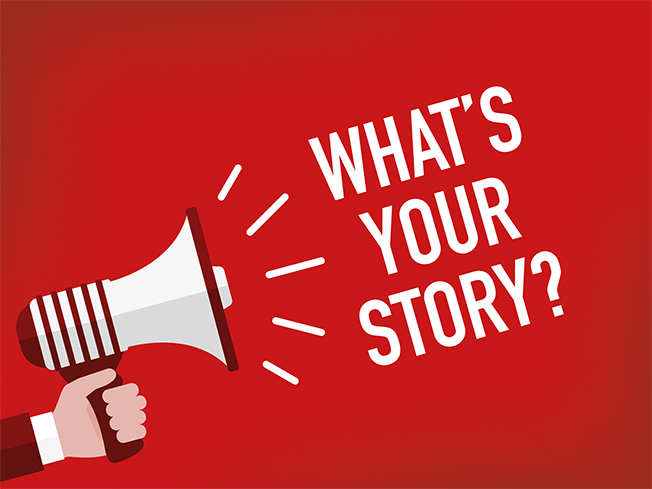Digital Transformation in Customer Communication: Win-Win Situations for Customers and Brands
Digital transformation successfully applied to customer communication can become a marketing differentiation factor and a crucial part of the brand experience, Lucie Poisson from 1&1 IONOS explains.

© oneinchpunch | istockphoto.com
The demands of customers are growing exponentially. Digital transformation provides not just the means to meet these high expectations, but also offers an opportunity to create a deeper and more durable relationship between the brand and its customers. Digital transformation successfully applied to customer communication may even become a marketing differentiation factor and a crucial part of the brand experience. On the customer side, technologies also bring attractive and concrete benefits.
Four case studies selected for this article demonstrate how digital transformation has allowed interaction with the audience to be successfully customized and has built a meaningful bridge between offline and online communications. The case studies have deliberately been chosen from different sectors to show how digital transformation does not have any industry borders and how diverse the user experience can be. The common factor shared by all case studies is that they concern customer communication and highlight benefits not just for the companies and brands, but for the customers too.
Digital customized interactions for higher engagement
Offline, brands may to date have been very good at providing a highly personalized service to prospects or customers, especially through demonstrating how a product can meet the specific requirements of the customers. But usually these sorts of valuable custom interactions are not readily scalable to a larger number of users.
Try before you buy
That’s one of the reasons why brands invest massively in digital technologies. To name one prominent example – that of L’Oréal’s investment in its “Digital Services Factory” and the purchase in March 2018 of the augmented reality and Artificial Intelligence expert, ModiFace. However, the cosmetics brand did not wait for this acquisition to use digital technologies in its customer communication – L’Oréal has been providing a tool for interactive test of make-up through a dedicated app, the Makeup Genius, since 2014. The principle is simple: the user takes pictures of herself or himself and then chooses the make-up she or he wants to test. The app, based on the RT TRACK 64 technology, originating in the cinema industry and 3D video games, applies the new look into three dimensions, as the augmented reality technology captures 64 facial points in real time. As additional functions, the app integrates options for online purchasing and for sharing the results with friends, especially on social media, making the word-of-mouth digital too and thus capable of reaching a bigger audience
Testing the app, the user experiences an immersive customer experience, no matter where she or he is at the time. There is no longer a need to physically visit a shop to discover the effects of the product. Compared to a testing experience in stores, this is an easy way of checking out a wide range of cosmetics in a very short time. An app providing such a digital customization makes sense as the result depends a lot on personal characteristics: form of the face, color of the skin, etc. On the brand side, this digital measure allows the test phase to be shortened and therefore it accelerates the purchase. In addition, the interactions of the customer with the app become an interesting source of insights regarding the taste and the trends of the market. On top of this, one of the advantages is that feedback can be automatically consolidated, whereas previously, managers had to collect the learnings of the vendors in their shops, which was generally a costly and slow process.
Given that there are 4 billion searches regarding beauty each year, L’Oreal’s “Connected beauty” seems to have a promising future, because the path from the search to the test of the product and the purchase is done at the same place: on a smartphone. But the potential of digital transformation is not limited to this sector: similar initiatives are running in other industries, with one such branch being the optical industry, where pre-testing glasses is being managed at a distance.
Customization online
e-Commerce offers other examples of digital custom interactions that promote a higher level of engagement. Basically, until now, when customers were purchasing online, they were – and are still, in most instances – relatively passive: they search for the product they like the most and buy what is available and what best matches their preferences. Usually when it comes to clothes and furniture, the perimeter of decisions has been quite limited to the size of the item, its color, and sometimes its material. With advancing digital transformation, however, it is now easier for brands to customize their website experience, providing more elements which can be decided on by the user. On the website of the clothes brand, Lacoste, for example, the visitor can create his or her own polo-shirt, choosing the form and size, the colors of the five different clothes elements, and even add his or her own initials to the creation. The website visitor changes the product in real time. He or she co-creates it through what can be described as an interactive communication in a non-verbal mode, with a series of proposals and actions to be taken.
From a brand perspective, the online purchasing experience offered by Lacoste strengthens the brand purpose, stressing the fun aspect: “You're the playmaker. Let the games begin!” declares the brand on the dedicated page of the website. With this initiative, there is space given to uniqueness through creativity and interactivity – a feature which relatively few e-shops offer, with visitors’ options normally being confined to viewing and selecting products. The Lacoste brand, on the other hand, allows each visitor to develop visibility based on his/her own identity. This can play an indirect role in a recommendation process, as customers may receive feedback from relatives or friends and take pride in their own creations, meaning that they will mention the brand. This is a sort of “virtuous circle”. Of additional significance is the fact that the price for the custom polo-shirt is affordable compared to the standard prices of the brand product portfolio, and this makes this custom product experience quite accessible and capable of achieving a certain virality.
Seamless experience between offline and online communication
Until relatively recently, the offline and the online worlds seemed to develop in silos. But the bigger the digital transformation becomes, the more complementary these two dimensions are. This is particularly true in retail, where communication with customers is evolving, embracing little by little the best of both worlds.
For example, in 2012, the Dutch clothes retailer C&A ran a digital in-store campaign, “Fashion Like”, in one of its stores in São Paulo. It consisted of displaying the “likes” an article gathered through previous social media interactions on the article’s own hanger and was an unqualified success (e.g. 53,674 views for the Fashion Like tab on Facebook after only after two weeks [1]). For the customer, such an approach offers interesting additional information brought directly to the point of sales at the right time: the purchase decision moment. The evaluation of previous customers helps the shop visitor to better judge the item, so she or he can decide to buy it or not, whilst still maintaining the advantage of having the product immediately available. As brands know that the customer visiting a shop tends to compare prices and to search for additional information online through their smartphones, this sort of initiative simply serves to make the process easier and faster. On the brand side, the use of the social media preferences is a clear path to influence the customer in his or her purchase behavior. Furthermore, even if there are few assistants available or if they are not available at the moment the customer visits the shop, the digital hangers indirectly bring a human touch to the shop experience, which is positive for the brand.
Curing ills in the service sector
In the service sector, communication is an even more important element than in retail, because interactions are what the user is looking and paying for. For a long time, transforming concrete offline communication into a digital experience was considered by brands or concerned professionals as equating to a loss of “soul” and of expertise. But with the new expectations of millennials, our nomadic lives, and the democratization of technology – especially smartphones – this is changing. Digital transformation is even having an impact on relatively traditional services like medical consultations. Indeed, a lot of start-ups are disrupting this sector, allowing the patient to get digital health care or an online doctor’s appointment. This is the service companies like Babylon in the UK provides. Digital remote consultations are very practical for the patients – why do I have to wait days for an appointment with a general practitioner, when it is known that the earlier my illness is treated the faster I will recover? Why do I have to undergo the physical stress of leaving home and going to a clinic if I am already sick? Of course, as not all sicknesses can be cured at a distance, the app facilitates “offline” appointments at clinics too. In a way, it helps to “filter” the serious cases.
This digital transformation – and the general acceptance of e-health today – is turning into a huge business opportunity: as of this September, digital consultations are being reimbursed by the National Health Service in France. With a balance between core health expertise, data reworked through Artificial Intelligence, and high levels of user experience, new players can emerge, providing an efficient relationship between patients and doctors.
Contrary to what we may sometimes still think, digital transformation is changing customer communication. But instead of making it dry and vague, it brings it to the next level of interaction and co-creation, beneficial for both customers and the brands. In addition, the digital turning point incentivizes marketers and product managers to take the customer journey even more into account and to rethink what really creates additional value for the end customer.
References:
1. Facebook Insights, April 18 – May 5, 2012
Lucie Poisson is a doctor of linguistics. Her PhD, completed at the University of Bern (Switzerland), was about storytelling in advertising. She is Marketing Manager at 1&1. She joined the company as International Online Marketing Manager, before becoming Commercial Product Manager. Previously, she worked at SAP and at several publishers in Paris, where she was in charge of marketing and digital projects.
Please note: The opinions expressed in Industry Insights published by dotmagazine are the author’s own and do not reflect the view of the publisher, eco – Association of the Internet Industry.





